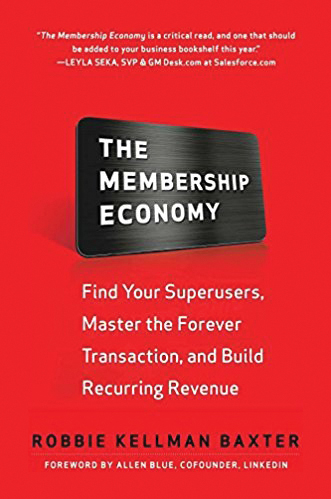Dilemma: We add one client and then we lose one. There’s no real growth this way and we have never done a campaign push to grow other facets of our business. Should we focus there? And if so, how do we do it?
Thoughts of the Day: Consider the effort that goes into getting new customers. Make sure that the business lines you’re growing have long-term value. Teach your employees about how valuable repeat customers are to the business, what that means to the company’s well-being long term, and what they can do to help.
 Selling new customers is time consuming and costly. Instead, focus on the revenue that comes from retaining customers year after year, which includes putting someone in charge of keeping customers on board. Pay attention to your renewal process and watch the dollars roll in.
Selling new customers is time consuming and costly. Instead, focus on the revenue that comes from retaining customers year after year, which includes putting someone in charge of keeping customers on board. Pay attention to your renewal process and watch the dollars roll in.
Run the numbers on profits from returning customers. They are usually higher than initial sales profits, after accounting for all delivery and installation costs and sales commissions. Think about the sale value of your business. A book of customers who keep using your service is a valuable asset.
Get a credit card on file to put clients’ charges through, with an automatically renewing service agreement and an annual escalation percentage, if possible. Offer customers services for free or at a huge discount during their first year with you, just to get the process started. Create tiers of service so you can give price-conscious customers more options and incentive to stay. Start thinking about customer relationships in decades, instead of as one-time acquisition events.
One of the best ways to improve value is to fundamentally connect with and understand ways your services can improve peoples’ lives. An added value is something like making it easier for customers to maintain a working system, or to get service on-demand when it’s needed. Staying in front of the customer so that they don’t have to go searching for a service solution is critical. The third way to create value is to regularly add services that customers are looking and asking for. Make it your mission to add a new service or service enhancement every year or two—or more frequently to keep pace with industry innovation.
Set two goals each year for renewals: one for converting new customers to renewals and one for retaining existing renewals. Then think about a third revenue opportunity to sell something additional to those recurring customers. Do you own complementary companies such as a restaurant or bridal shop? Make sure your customers know.
If your company hasn’t sold a lot of contracts through your other vertical avenues of business, take a look at how many of last year’s customers fell away, and why they did. Are people moving away or otherwise no longer in need of your services? If so, who is taking their place and how do you tap into those new potential buyers? How many left because of dissatisfaction? How many left because they didn’t hear from you, you weren’t relentless enough with the follow up—or maybe you were a little too aggressive?
Take a look at what your competitors are doing to keep or shed customers. Sometimes another company’s throw-aways can be your mana from heaven. Try out their services for yourself: How was the booking process, the ride, and the billing or follow-up after the trip? Where do they excel or fall down? Look at their retained customers: You may find clues to their success that you can adapt for your own business.
At the heart of most customer-retention programs is customer interaction. How many of your clients rave about their experiences with your employees? Explain to employees that continuing revenue from current customers makes the company more stable and profitable, which in turn contributes to employee retention and pay increases.
 Show employees the link between making sure every customer’s products or services are in top working order and how it increases the likelihood that customers will stick with your company in the long term—and how it ultimately will benefit them.
Show employees the link between making sure every customer’s products or services are in top working order and how it increases the likelihood that customers will stick with your company in the long term—and how it ultimately will benefit them.
Looking for a good book? Try “The Membership Economy: Find Your Super Users, Master the Forever Transaction, and Build Recurring Revenue” by Robbie Kellman Baxter.
[CD0818]
Andi Gray is the founder of the Business Consulting Firm Strategy Leaders. She can be reached at andi@strategyleaders.com.

